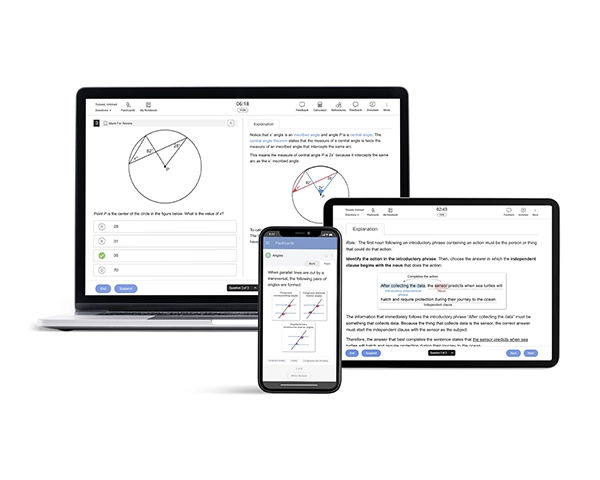If you are taking the Digital SAT®, it is important to note what to bring on your test day. In this article, we have put together a complete checklist of the Digital SAT test day requirements, and acceptable IDs.
Digital SAT Test Day Checklist
Before you head out to your Digital SAT test center, be sure to go through this Digital SAT test day checklist below to help you keep the important things handy:
A printout of your updated admission ticket.
An acceptable Photo ID.
A fully charged approved testing device with BluebookTM installed
If your testing device is unable to sustain a charge for three hours, make sure to bring a charging cable
A backpack to carry your device
A calculator approved as per the Digital SAT Calculator Policy.
Optional: Epinephrine auto-injectors like EpiPens, if needed. Students may carry them in a clear bag without needing accommodation and keep them under their desks during the test. Please contact the “Students with Disabilities Services” to learn about the policies on different medical devices and medications allowed in the test center.
Additionally, you are allowed to carry the following things on your test day:
- A watch with a silent alarm
- Extra Batteries – must not be kept on desk while taking the test
- A bag to carry your stuff
- A snack and a water bottle
Before the day of your Digital SAT test, sign into your College Board® account to ensure that there are no changes to your test center. You can enter the test center only with an up-to-date printout of the admission ticket.
You must note that the College Board has listed a few things that are prohibited at the test center. Any violations may result in the cancellation of your scores. To know more, read our page on SAT test policies and accommodations.
ID Requirements
According to the Digital SAT policy, carrying a valid photo ID on test day is mandatory. In addition to the admission ticket, your photo ID will be used to confirm your identity and registration at the test center.
Acceptable IDs
- Driving License or Non-driver’s ID issued by the government
- Official student ID card received from your current school
- Passport or US Global Entry Identification Card issued by the government
- Military or National Identification Card issued by the government
- Digital SAT Student ID Form (prepared by your current school or by a notary in case you are homeschooled)
Unacceptable IDs
Identity documents that do not meet the Digital SAT test day requirements mentioned above are unacceptable. You need to keep a few additional things about IDs in mind. Check the list below for those:
- Documents that are torn, worn off, scarred, or damaged in any way
- E-documents shown on a device
- Documents that appear digitally altered or tampered
- Documents bearing statements that they are not valid as identification
- Credit or debit cards (even those with a photograph)
- Birth certificate
- Social security card
- ID card of employment
- Temporary ID card of any type
- Missing Child (“ChildFind”) ID card
Student ID Forms are not valid for the Digital SAT if you are 21 or older. The only form of ID accepted in such a case is an official driving license or a passport issued by the government that meets the requirements stated above.
If You Don’t Have an Acceptable ID
If you do not have an acceptable ID for the Digital SAT, the Student ID Form may be used. If you are homeschooled, this form must be prepared and authenticated by your current school or a notary. You must attach your current photo to the form before getting it notarized. The Student ID Form is only considered if you are under 21 years of age and taking the test in the U.S.





